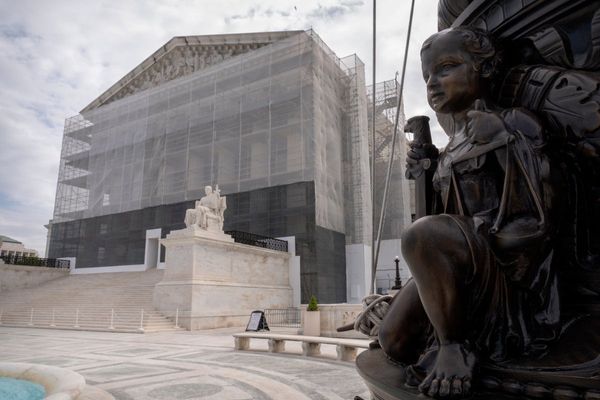
As this Guardian-Observer list reaches its halfway mark with a gay Englishman and a polemical African American social scientist (Lytton Strachey and WEB Du Bois), having now plundered more than a century of Anglo-American prose, and with at least two more centuries to come, it’s a good moment to take stock. What does “classic” really mean? And, further, how does the definition of “nonfiction classic” stand up to scrutiny?
There are many answers to these questions. “Nonfiction classics” certainly have different meanings at different times. For instance, a 20th-century classic will be distinct from an 18th- or 19th-century classic, chiefly because its literary and cultural milieu is different.
In fiction, Italo Calvino says that a classic is “a book that has never finished what it wants to say”. Ezra Pound identifies “a certain eternal and irresponsible freshness”. TS Eliot, much more demanding, observed in The Sacred Wood that “no modern language can hope to produce a classic, in the sense I have called Virgil a classic”. Alan Bennett wryly notes: “Definition of a classic: a book everyone is assumed to have read and often thinks they have read themselves.”
In assessing its classic status in this way, we bump into a new and troubling question: “Is nonfiction the new fiction?” There are some very good writers who will argue that this is so, but I disagree. I have written, and still maintain, that nonfiction (which can sometimes successfully bring together many genres) is not, strictly speaking, a genre of its own. Creatively, yes, using narrative techniques borrowed from fiction, it’s possible to give some kinds of nonfiction the aura of a distinct new genre. But, at the end of the day, nofiction disintegrates into philosophy, memoir, history, reportage, and poetry, etc. This is particularly true of “nonfiction classics” from the 18th and 19th centuries, as we are about to find out.
And yet when it comes to choosing “classics”, nonfiction still answers to the same considerations as classic fiction. One simple test might be: is it still in print? One thing is certain: the classic in all genres must, uniquely, express something about its subject in a way that was previously unexpressed. It must, in Pound’s famous injunction: “Make it new.” Read it for the first time now, and still be thrilled by its vigour, originality and wisdom.
Our nonfiction list, winding into the past and now approaching the year 1900, has reached a hinge moment. In living memory (which is, very roughly, where the first 50 titles have been located) our criteria have been shaped by popular and literary critical fashion, by a changing marketplace and changing technology, by bestseller lists, and by hype. In the 20th century, a familiar palette of blurbish adjectives (which will have less and less meaning with the passage of time) gave shape and colour to a moving target: provocative, outrageous, prophetic, groundbreaking, funny, disturbing, revolutionary, moving, inspiring, life-changing, subversive…
Another list in other hands might produce a different spectrum of tones and values, but these have been my selections, inspired by the obvious and inescapable fact that this particular list first appeared in the pages of a British national newspaper during 2015-16.
Your list-maker, then, is a creature of his or her times. They will have the appetites of a butterfly collector, the instincts of a gambler and the mind of a missionary or saboteur – perhaps with more than a hint of the cultural dictator. They are also part anthologist and part antiquarian.
As I have written before, any such list of nonfiction “classics” is peculiarly idiosyncratic and personal. Unlike fiction, which remains a discrete and well-defined genre with established criteria, as manageable and satisfying as a spacious country house garden, we have to recognise that “nonfiction” is the wild west. To put it another way: choosing it becomes an infuriating case of “as I please”, driven by whim and caprice as much as taste.
There’s an additional difficulty. As every week’s roster of below the line comments indicates, almost any selection of “classic nonfiction” from library shelves that includes history, film, biography, cookery, politics, fashion, sociology, art history, reportage, feminism, drama, biology, philosophy, economics and poetry (which I’ve controversially included because poetry is catalogued as “nonfiction” by most libraries) is going to seem either perverse and disappointing, or stupid and enraging, or downright baffling. There is no accounting for taste, and when the sky’s the limit, one person’s taste can turn out to be very unaccountable indeed.

If a nonfiction classic is whatever takes your fancy, according to your own self-imposed criteria, then the subtitle to such a project is going to be “anything goes”. It could be a book that reported a great revolution – John Reed’s Ten Days That Shook the World – or a masterpiece of magazine journalism that exposed the truth about a humanitarian catastrophe, such as John Hersey’s Hiroshima. Some of the classics catalogued so far have caused shock and outrage: Rachel Carson’s Silent Spring, for example, or Edward Said’s Orientalism. Others, notably Isaiah Berlin’s The Hedgehog and the Fox, I’ve listed as a diversion, to vary the pace. Still others – Germaine Greer’s The Female Eunuch – have broken down barriers and turned worlds upside down. Some titles (A Grief Observed; A Room of One’s Own) have expressed a new idea sotto voce; others at maximum decibels: The Feminine Mystique; The Double Helix; The Making of the English Working Class. Some classics live on, imperishably, as works of sheer entertainment: How to Cook a Wolf, Eminent Victorians and Goodbye to All That. Some classics were written in extremis and carry their scars all too visibly (Dispatches; Birthday Letters); others are more reflective (The Uses of Literacy; Awakenings). Every one is original and speaks for itself.
At this juncture, I have also to concede that my criteria were often in a state of flux from week to week. Working backwards, one’s choices inevitably reflect the contemporary zeitgeist. In the 20th century, two world wars, in particular, have influenced several of my selections, for better or worse. The passage of time will undoubtedly winnow a lot of titles inspired by the Great War once that apocalypse takes its long-term place in history. Under this heading, I also concede several regrets and (not quite the same thing) some tough decisions.
Regrets include George Steiner’s Language & Silence; Malcolm X and Alex Haley’s The Autobiography of Malcolm X; Nancy Mitford’s Noblesse Oblige; Hannah Arendt’s The Origins of Totalitarianism; Richard Mabey’s Flora Britannica; and William Goldman’s Adventures in the Screen Trade.
Some tough decisions were very tough: Cyril Connolly had to be on my list, but to prefer Enemies of Promise over The Unquiet Grave was painful. JM Keynes’s The General Theory of Employment, Interest and Money, published in 1936 in the depths of the Great Depression, is beyond question a landmark volume of the 20th century. But every nominated author is only allowed one title, so I chose the less well-known but more readable Keynes essay The Economic Consequences of the Peace. Finally, I agonised about excluding the late John Berger’s Ways of Seeing. In or out? According to the rules of this series, he was not eligible: his classic text, which derived from a television series, is the work of several hands, including the producer Mike Dibb, with Sven Blomberg, Chris Fox and Richard Hollis. So he’s not listed here, which is probably unfair.
Then there’s what I came to think of as the “Thorstein Veblen question”. The neurotic author of The Theory of the Leisure Class (as well as the far-seeing The Engineers and the Price System, 1921), Veblen is remembered as a cantankerous theorist with a penchant for the wives of his colleagues on the Stanford campus. Among many phrases, he coined “conspicuous consumption”, and is a guru of American technology, but his books now seem weirdly dated. Veblen – in or out? In golfing parlance, he did not survive the cut.
The year 1900, now imminent, marks a turning point. With the benefit of hindsight, as we move into the 19th century, we enter a new library of books winnowed by posterity and tested by the vicissitudes of more than a century of literary taste. Moreover, books that are at least a hundred years old are no longer so encumbered by the circumstances – tides of history; whirlpools of contemporary opinion – in which they were written and read. A modern classic may easily turn out not to be literature and slowly get forgotten; a 19th- or 18th-century classic will be literature almost by definition. As survivors from another age, such books have a consequence or a significance that several of the books listed so far do not. Among 20th-century titles, it’s more difficult to achieve both influence and true greatness, though The Waste Land and Waiting for Godot are both titles with a strong claim on posterity. In the 19th, 18th and 17th centuries, the classics are more widely scattered. This is probably a good thing. I have just 50 slots left for the next two centuries.
This list has another year to run. It will, no doubt, continue to provoke and infuriate. That’s partly its modus operandi. But, more seriously, it will also continue to mine a treasury of prose that has been seasoned by adversity, guarded by devoted readers of all kinds, and cherished for expressing the shock of the new.







